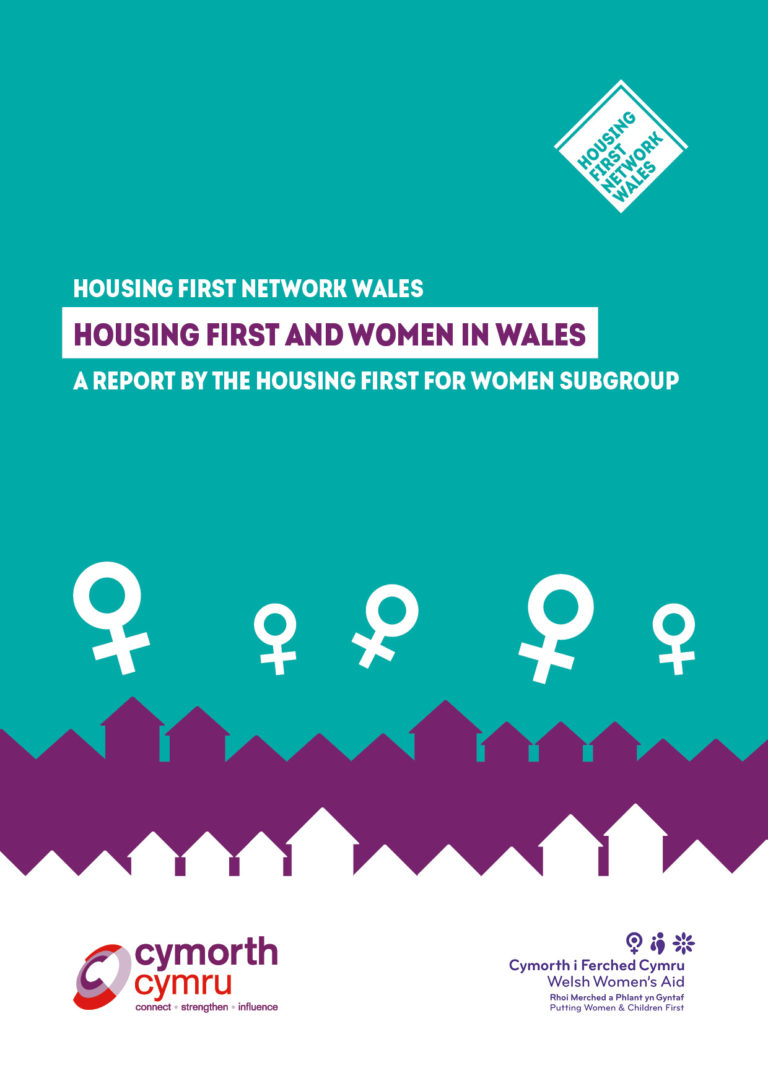After months of hard work, and the input and insight of a range of people, the Housing First for Women report has been published. We would encourage everyone involved in supporting people experiencing homelessness, including landlords, support providers and commissioners, to read this report and consider how they can ensure that services meet the accommodation and support needs of women experiencing homelessness. To explain the importance of this document, and the work of the Housing First Network Sub Group that produced it, we asked Katie Davies, Head of Services and Survivor Engagement at Welsh Women’s Aid (who also chairs that sub group) to write this blog post.
The Housing First model is a unique approach to tackle homelessness which focuses on long term, affordable accommodation. I am incredibly proud to chair the Housing First for Women sub group of Wales’ Housing First Network. Considerable work needs to be done in terms of analysing how women are supported when they critically require housing; this is an area that is developing rapidly
At Welsh Women’s Aid, we believe in a whole-systems approach and a Change That Lasts. While barriers to housing are society-wide, for those experiencing violence against women, domestic abuse, sexual violence, and exploitation, for those women who are fleeing violence and abuse, and for those seeking to rebuild their life following this trauma, these barriers are further exacerbated. For example, survivors may be experiencing financial abuse or coercive control where the perpetrator limits the control the survivor has over their finances. This could mean the survivor does not have access to their own funds, has never been able to pay bills or does not have any funds to support themselves when fleeing. This can make it incredibly difficult to find accommodation.
With many intersecting issues compounding the challenges that survivors face, cases are getting more and more complicated. The Housing First for Women report highlights that without multi-agency support, many survivors will not be able to access the additional support to address other challenges they may be facing.
Having the insight of the frontline organisations that fed into the report means we can truly appreciate the picture of the situation on the ground. Organisations highlighted a wide range of challenges faced by the survivors they support, and organisations were able to make anonymous commentary on how women facing a critical housing need were supported or who faced complex needs.
 This report rightly acknowledges that for women, homelessness may look different. According to the report, women are less likely to present as ‘rough sleepers’ and more likely to ‘sofa surf’. This can leave survivors in difficult situations and vulnerable to exploitation; this fact is in large part responsible for the ongoing review of Wales’ Housing First principles.
This report rightly acknowledges that for women, homelessness may look different. According to the report, women are less likely to present as ‘rough sleepers’ and more likely to ‘sofa surf’. This can leave survivors in difficult situations and vulnerable to exploitation; this fact is in large part responsible for the ongoing review of Wales’ Housing First principles.
I hope that the recommendations laid out in the report are taken as a priority to ensure that survivors of VAWDSV are fully supported by a housing project that understands the intersecting elements of homelessness and VAWDSV. We need to acknowledge that homelessness can look different for every person, and we need a system that reflects this.
I’d also like to take this opportunity to thank Cymorth Cymru and all key stakeholders for their hard work in highlighting an issue that women across Wales face. The Housing First for Women Subgroup will continue to provide valuable insight in housing policies that face many survivors across Wales.



